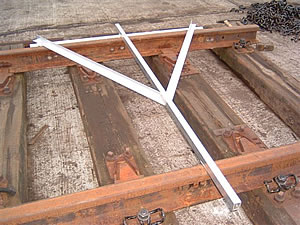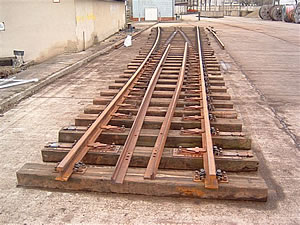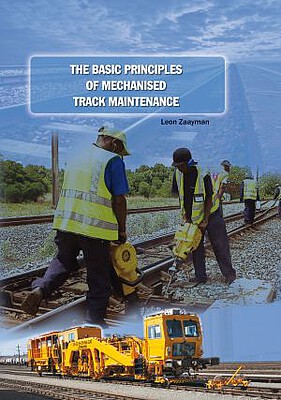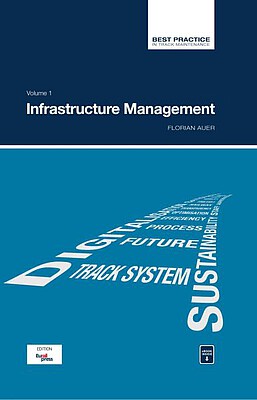Design of turnouts
The new track geometry of turnouts is usually set in the route plan in height and direction. The marking out is done by the surveying department.
The marking out (to ensure the target geometry) by wooden poles is particularly important. It is necessary to ensure that the piles are put in sufficiently deep so that they do not get damaged or buried during the work.
A so-called turnout sketch is the basis for the procurement, construction and installation of turnouts and crossings. The factory prepares a turnout laying plan on the basis of the turnout sketch for each turnout and crossing. Tables showing the sleeper total weight are given for each turnout or crossing on the turnout laying plan. In order to ensure that the turnouts, crossings and track connections are assembled correctly at the installation points, the individual parts, including the distance apart of the sleepers in the turnouts outside on the stock rails, are specially marked.
The sequence of the individual parts when building a simple turnout within the framework of the construction planning is set in relation to the selected turnout rework procedure, among other things, the space available for assembly and disassembly. Suitable as assembly stations are places with a flat, firm foundation, such as a track where the turnouts or crossings in whole or in part (tongue device, middle part and crossing part including the connection lengths), can be laid out, assembled and welded together if necessary. The fitting on the worksite in the hole (excavation trench) is rarely done because of the long possession times that would be necessary and the consequent operating problems this would cause. The local requirements do not, in general, allow the fully welded turnout to be installed from the side. Generally, the overhead line masts on the electrified lines get in the way.
The turnout materials are unloaded in the immediate vicinity of the assembly location with suitable unloading equipment. They should be stored so that they are clean, clearly laid out and do not offer an accident risk. At the same time workways and driveways for assembly with the slewing crane or two-way excavators must not be blocked. The turnout parts are first checked for completeness.
In the case of a simple turnout, first the straight outer rail (lifting beams should be used depending on the length of the rails), with curved turnouts the rail with the largest radius is placed on wooden blocks or vertically placed sleepers, taking into consideration the joint gaps fish-plated and roughly aligned. In order to facilitate the following layout of the sleepers while still in the turnout factory, the sleeper division marks (according to the specifications of the sleeper sum dimension from the turnout laying plan) are transferred with oil chalk to the rail foot. It is important that the sleeper numbers lie on the correct side. The rail pads are then laid out on the sleepers. The sleepers with slide-chair plates remain rail pad free (in the tongue range from turnout start to the tongue root joint).
Turnout assembly:
The assembly continues with the placing of the curved stock rail, the closure rails, and the running rails with check rails. With a double track angle, the stock rails are angled by means of the centre punch marks attached on the locking pieces.
Bringing the centre punch marks into a right angle:
Stock rail, closure rail and running rails are fish-plated together bearing in mind the joint gaps. The sleepers are aligned in such a way that the rail foot lies parallel to the ribbed plates. Then the rail is lightly screwed with the sleeper.
Inserting the tongues:
Now the tongues, the inner closure rails and the crossing are put in. Before these parts are fish-plated and screwed in, the angles on the tongue devices and on the crossing are set in accordance with the technical instruction. After that, the closure rails and the crossing are fish-plated, taking into account the joint gaps, and the rails are loosely fastened down to the sleepers. Following on from this, the turnout is lined again and the rail fastenings are finally fastened down. After the assembly a check should be made that every tongue can be moved without considerable force.
You can find suitable specialist literature about the topic here:
The Basic Principles of Mechanised Track Maintenance
This book is dedicated to the many people involved in the day to day planning and performance of track maintenance activities. Providing a practical approach to everyday challenges in mechanised track maintenance, it is not just intended as a theoretical approach to the track system.
Railways aim at transporting people and freight safely, rapidly, regularly, comfortably and on time from one place to another. This book is directed to track infrastructure departments contributing to the above objective by ensuring the track infrastructure’s reliability, availability, maintainability and safety – denoted by the acronym RAMS. Regular, effective and affordable track maintenance enable RAMS to be achieved.
Best Practice in Track Maintenance, Vol 1 - Infrastructure Management
Infrastructure Management Volume 1 looks at aspects of infrastructure management with particular reference to the single European railway area. Based on best-practice examples from Central Europe, measures for the targeted retrofitting and improvement of the infrastructure maintenance of the existing network are presented. In many cases, infrastructure operators are faced with a generational change, which accelerates the process. Modern information and communication technology can simplify the comprehension and presentation of complex contexts. Modified approaches to asset management and life-cycle management enable implementation of the "transparent permanent way" or the "railway 4.0".





